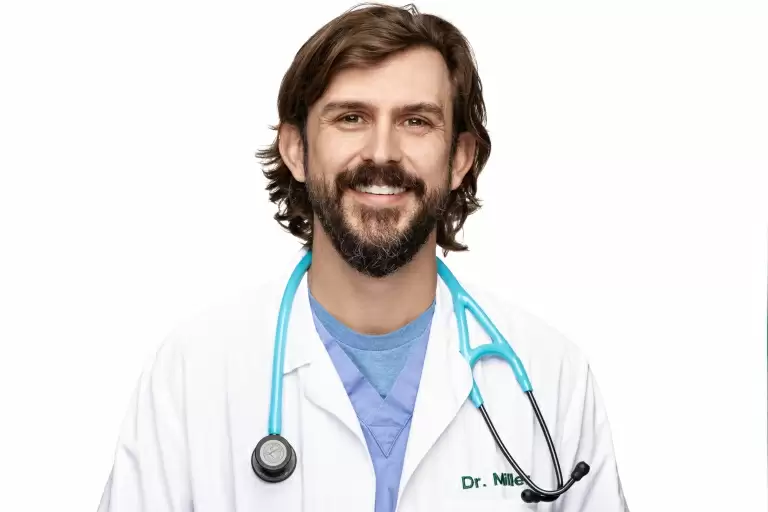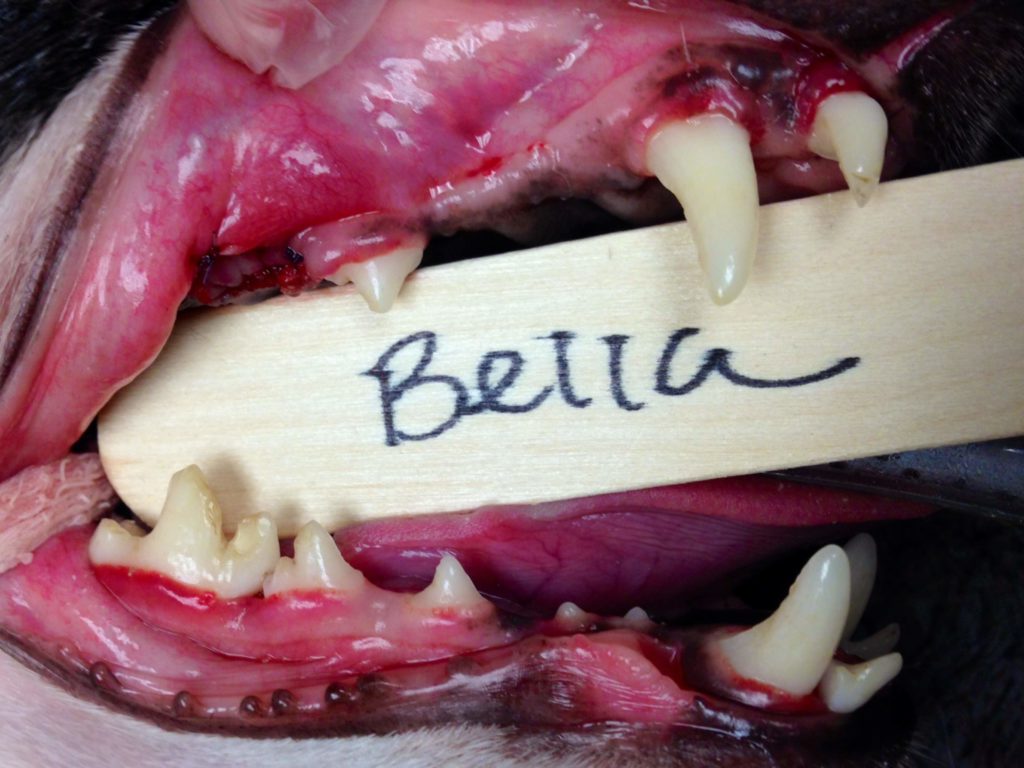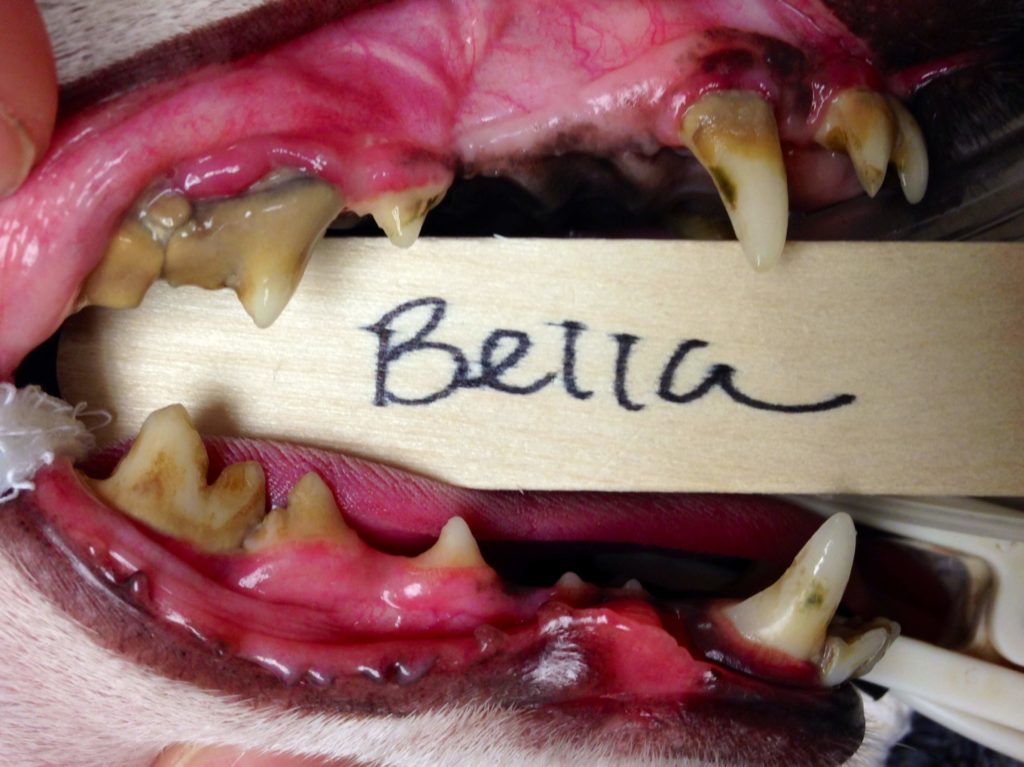Monthly Doctor’s Blog: Common Questions Around Pet Dental Health

Every month, the doctors of AtlasVet are writing a blog post to help pet owners with common questions.
For March, Dr. Chris Miller discusses common questions around your pet’s dental health!
Dogs and Cats have nearly identical teeth to humans at the cellular level. They may range in size, shape and number but overall, they are the same in composition. This means that they run into the same problem we do: Periodontal disease.
Question: What is that “stuff” I see on my pet’s teeth? Is that plaque?
No, that is tartar. The sugar your pets eat feeds hungry bacteria that live in their mouth. The byproducts of the bacteria lead to plaque buildup. This “Invisible plaque” eventually leads to tartar (which you see) and with that tartar present, slowly the normal tissues around the teeth erode away. This leads to inflammation, pain and tooth loss.
Question: What can I do about this?
Since we know that dogs and cats’ teeth are just like ours, then we know the answer! Brush often and go to the dentist.
Question: I brush my teeth twice daily. Are you asking me to brush my dog’s teeth this often?
In short, yes. But if logistically this seems like an impossible feat, then know that any teeth brushing is better than none at all. Do not use toothpaste meant for people since the fluoride in it can be harmful to dogs and cats. There are special savory flavored toothpastes (like chicken, beef, or tuna flavored) that are okay for pets. I usually start off by feeding a small amount of the pet toothpaste to them as a treat. I then add some to the brush while slowly and gently brushing the outsides of their teeth. Once they get used to the process and routine, brushing can be a great time to bond with your pet. There are different sized toothbrushes that match the job. For small pets, I like the thimble toothbrush that goes over the tip of your finger for getting into particularly smaller mouths. Brushing doesn’t take long, only a minute or two. Setting your smart phone to remind you can be very helpful. If, while brushing, you see small amounts of blood, that is acceptable. Sensitive gums just mean you should be brushing more often!
Question: Do “teeth specific” pet treats and chews help?
You’ve probably heard about special foods or chew treats that clean dog’s teeth for you. There are a few prescription foods and chew treats that are specially designed to clean pet teeth and have been shown to help (Hills T/D for example). However, the age old reasoning that dry kibble keeps pets’ teeth clean better than wet food really doesn’t hold up. Ultimately, someone is going to have to physically go in and clean the teeth to keep them healthy. I’m not saying that these treats cannot be occasionally helpful tools, but relying on them alone won’t get the job done. ie would your dentist say to eat an apple once a day v. brushing every 12 hours? Probably not.
Oh, and if you see a product on the internet that promises to remove tartar and keep pets from needing brushing or anesthetized procedures, ask yourself this: “Is there a product like this for humans?” If not, it is probably a hoax. If we could spray our teeth with magic potion and not go to the dentist, people would sign up for it! If it is too good to be true, it probably is.
Question: Other than brushing, what is the best way to maintain my pet’s dental health?
The most effective way to maintain your cat or dog’s oral health is by performing anesthetized dental cleanings or COHATs (Comprehensive Oral Health Assessment and Treatment) as suggested by your veterinarian. During these anesthetized procedures the teeth and oral cavity are thoroughly examined. Full mouth radiographs can (and should) be taken. From there, the teeth are cleaned in the same exact fashion that your teeth are cleaning while in the dentist’s chair. Any problems that are discovered during the exam or on x-rays can be addressed whether it be extracting diseased teeth, removing excessive gingiva or performing a biopsy of abnormal tissue. (see photos below of a pre and post photo from a dental cleaning)
Question: Isn’t anesthesia for my pet risky?
Many clients resist anesthetizing their pets out of fear of safety. All anesthesia does come with some inherent risk, but your veterinarian should be taking steps to minimize this risk. AtlasVet requires an up-to-date annual exam and pre-anesthetic blood panel that can help rule out any pre-existing conditions that could increase anesthetic risk. The day of the procedure another exam is performed confirming that there are no red flags that might cause us to cancel the procedure. During anesthesia we monitor how the patient is doing by keeping a close eye on the oxygen and C02 levels, temperature, blood pressure, ECG, heart and respiration rate. This way, if a problem is noted, the anesthesia can be adjusted or turned off and the patient woken up. Keeping up with regularly scheduled COHATs as suggested by your veterinarian is a good way to make sure that each procedure doesn’t require too much work at once. Avoiding COHATs and allowing another year to go by without addressing periodontal disease sets pets up for long and difficult procedures in their future.
Question: What about “Non-anesthetized dental cleanings” that I see some places offer?
Some establishments offer “non-anesthesia dental cleanings.” This may seem tempting to keep your pet safe but ultimately they are glorified teeth brushings that cannot clean below the gum line. Conscious pets must be restrained for long periods of time during these procedures which can be traumatic to them both mentally and physically. Also, a majority of the COHATs performed at AtlasVet do require some type of procedure like a tooth extraction. These cannot be done during these non-anesthesia procedures and the pets end up either being referred to a facility that can perform a proper COHAT or the pet doesn’t get the treatment it needs. Non-anesthesia procedures can be scary for your pet and can end up with you performing two procedures instead of one. You can read more about them here: https://afd.avdc.org/what-is-an-anesthesia-free-dental-cleaning/
Keeping your pet’s teeth healthy can be difficult. Having a plan and involving your veterinarian at each annual visit will help make sure periodontal disease isn’t causing pain or resulting in excessive loss of teeth.
Bottom line: Get in the habit of brushing your pets teeth and talk to your veterinarian about a general dental plan for your furry friend.


